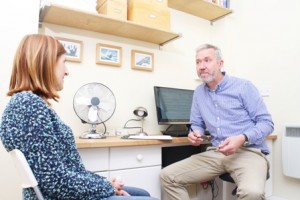
Case History: on your first visit the osteopath will take a thorough case history.You will be asked detailed questions about your present complaint, general health and past medical history. We will listen to you in order to understand your needs, and will respect your wishes and opinions.
Examination: a thorough and wide ranging physical examination will be performed.
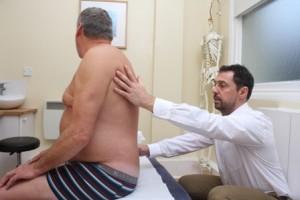 This will include an assessment of your posture and the way your body moves. The osteopath will palpate various parts of your body to assess how your tissues are working and identify any particular disturbed areas.
This will include an assessment of your posture and the way your body moves. The osteopath will palpate various parts of your body to assess how your tissues are working and identify any particular disturbed areas.
Further tests such as assessing your reflexes and other neurological tests, or measuring blood pressure may be performed. If necessary, further tests such as x-rays, scans, blood tests or other investigations will be recommended.
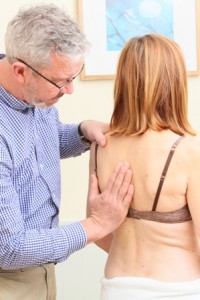 Diagnosis and Treatment Plan: the objective is to understand and diagnose dysfunctions that have resulted due to injury, stress or disease. The diagnosis takes account of all symptoms – not just the primary presenting problem – and whether and how they are connected.
Diagnosis and Treatment Plan: the objective is to understand and diagnose dysfunctions that have resulted due to injury, stress or disease. The diagnosis takes account of all symptoms – not just the primary presenting problem – and whether and how they are connected.
Diagnosis has two aspects:
• What is causing the current symptom or dysfunction– for example muscle tension, ligament strain or tear, arthritic joint or inter-vertebral disc strain.
• Why has this problem developed? This is very important, because by trying to understand why it has developed, the treatment is more likely to be effective in preventing recurrence in the future. The cause can often be found to be persistent effects of one or more old accidents and injuries, which the body is struggling to accommodate.
 It is important that the patient understands as much as possible about their problem so that they and the osteopath can work together in improving their patients’ all-round health.
It is important that the patient understands as much as possible about their problem so that they and the osteopath can work together in improving their patients’ all-round health.
Osteopathic treatment: consists of a wide range of manual hands on techniques, ranging from work on muscles and other soft tissues, to joint mobilising and specific manipulation to improve joint movement and function.
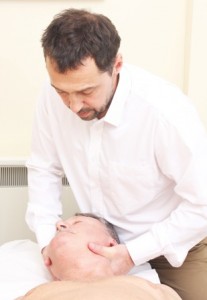
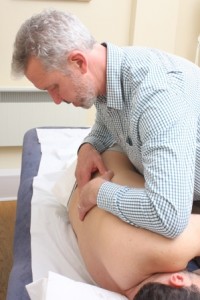
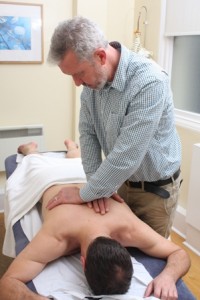
Gentle cranial osteopathic techniques can be used to great effect, especially in children and babies.
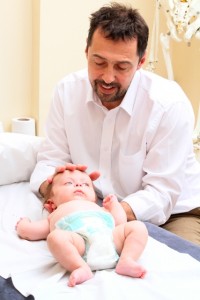
The aim of osteopathic treatment is not only to relieve pain and improve function but also to prevent the recurrence of symptoms. Treatment also involves advice on maintaining good health and avoiding those things that might be perpetuating your problem.
Advice is also given about ergonomics (our physical relationship with our environment and the way in which we interact with it), posture and body use, general and specific exercises, and diet if necessary.
Call 0208 521 7888 to book an appointment or book online now